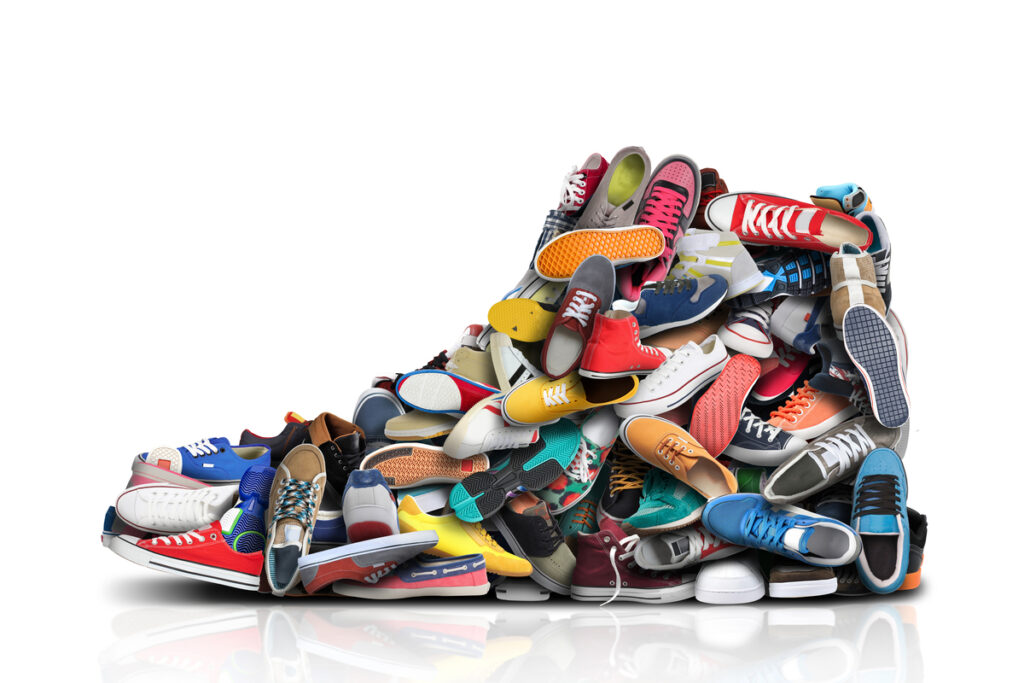In the dynamic world of sneaker design, color plays a crucial role in capturing the attention of consumers, conveying brand identity, and influencing purchasing decisions. The significance of color psychology in sneaker design cannot be overstated, as it has the power to evoke emotions, trigger memories, and create lasting impressions.
From vibrant hues that exude energy to muted tones that convey sophistication, the strategic use of color can make or break a sneaker’s success in the competitive market.
Brand Identity and Recognition
Color is a fundamental component of brand identity, and sneaker brands leverage this to establish a strong visual presence in the market. Iconic colorways, such as the red and black of the Air Jordan line or the vibrant palette of Nike’s Air Max series, become instantly recognizable and synonymous with the respective brands.
Consistent use of specific colors across different sneaker models helps in building brand recognition and loyalty among consumers.
Emotional Impact
Colors have the ability to evoke specific emotions and feelings in individuals. For example, red is often associated with passion and energy, while blue conveys calmness and trust. Sneaker designers carefully select colors based on the emotional response they aim to elicit from consumers.
Bright and bold colors may appeal to a younger demographic seeking excitement and individuality, while neutral tones cater to a more sophisticated and classic aesthetic.
Cultural Significance
Colors carry cultural meanings and associations that vary across different regions and demographics. What may be considered lucky in one culture could hold negative connotations in another.
Sneaker designers must be mindful of these cultural nuances when creating color palettes for global releases to ensure that the designs resonate positively with diverse audiences.
Seasonal Trends
Just as fashion trends evolve with the seasons, color trends in sneaker design also undergo shifts to reflect changing consumer preferences. Pantone’s Color of the Year sets the tone for design trends across industries, influencing the choice of colors in sneaker collections.
Designers often draw inspiration from nature, art, and popular culture to predict the next big color trends and incorporate them into their designs.
Collaborations and Limited Editions
Collaborations between sneaker brands and artists, musicians, or fashion designers have become a popular trend in the industry. These partnerships often result in limited edition sneaker releases that feature unique colorways and design elements.
The use of exclusive colors and materials in collaboration sneakers adds to their desirability and collectability among sneaker enthusiasts.
Consumer Preferences
Understanding consumer preferences is essential for sneaker designers to create products that resonate with their target audience. Market research, trend analysis, and consumer surveys help designers gain insights into the colors and styles that appeal to their customers.
By incorporating popular color schemes and design elements into their collections, brands can increase the likelihood of commercial success.
Color Theory in Design
Color theory, the study of how colors interact and impact each other, plays a vital role in sneaker design. Designers use principles such as color harmony, contrast, and saturation to create visually appealing color palettes that enhance the overall aesthetic of the sneaker.
By applying color theory effectively, designers can achieve a balance between creativity and marketability in their designs.
Innovations in Color Technology
Advancements in color technology have revolutionized the way colors are applied to sneakers. Techniques such as digital printing, sublimation, and heat transfer allow for intricate designs and vibrant colors to be reproduced with precision.
Sneaker brands continually push the boundaries of color application to create eye-catching designs that stand out in a crowded marketplace.
Sustainability and Color Choices
As the fashion industry shifts towards sustainability, sneaker brands are increasingly conscious of the environmental impact of their color choices.
Eco-friendly dyes, natural pigments, and water-saving manufacturing processes are being adopted to reduce the carbon footprint of sneaker production. Designers are exploring innovative ways to create colorful sneakers while minimizing harm to the planet.
Career Opportunities in Color Psychology and Sneaker Design
The intersection of color psychology and sneaker design offers a wealth of career opportunities for creative individuals passionate about both fields. Roles such as color consultant, trend forecaster, colorist, and sneaker designer are in demand in the industry.
Pursuing specialized education and training in color theory, design principles, and market trends can equip aspiring professionals with the skills needed to excel in this competitive field.
Conclusion
By understanding the impact of color on consumer behavior, brand identity, and cultural significance, sneaker designers can create compelling and marketable designs that resonate with their target audience. Embracing creativity, innovation, and a deep understanding of color theory is essential for success in the dynamic world of sneaker design.
Key Takeaways:
- Colors help create a recognizable look for brands and build loyalty among buyers.
- Color choices can trigger specific emotions, helping designs connect with different audiences.
- Designers need to consider the cultural meanings of colors to appeal to a wide range of people.
- Color trends change with the seasons and are often inspired by nature, art, and popular culture.
- Partnerships with artists lead to unique designs with special colors, making them more desirable to collectors.
- Knowing what customers like helps designers choose colors and styles that are more likely to sell.
- Using color principles effectively makes designs more visually appealing and memorable.
- New technology allows for brighter and more detailed colors, making designs stand out.
- Many brands are choosing eco-friendly colors to reduce their impact on the environment.
- Knowledge of how colors affect people opens career paths in areas like design, forecasting, and consulting.
For those looking to delve deeper into the world of sneaker design and color psychology, consider exploring the FIT x Complex Sneaker Essentials online course and certificate program.
This comprehensive program can provide valuable insights and skills for aspiring professionals in the dynamic field of sneaker design.




